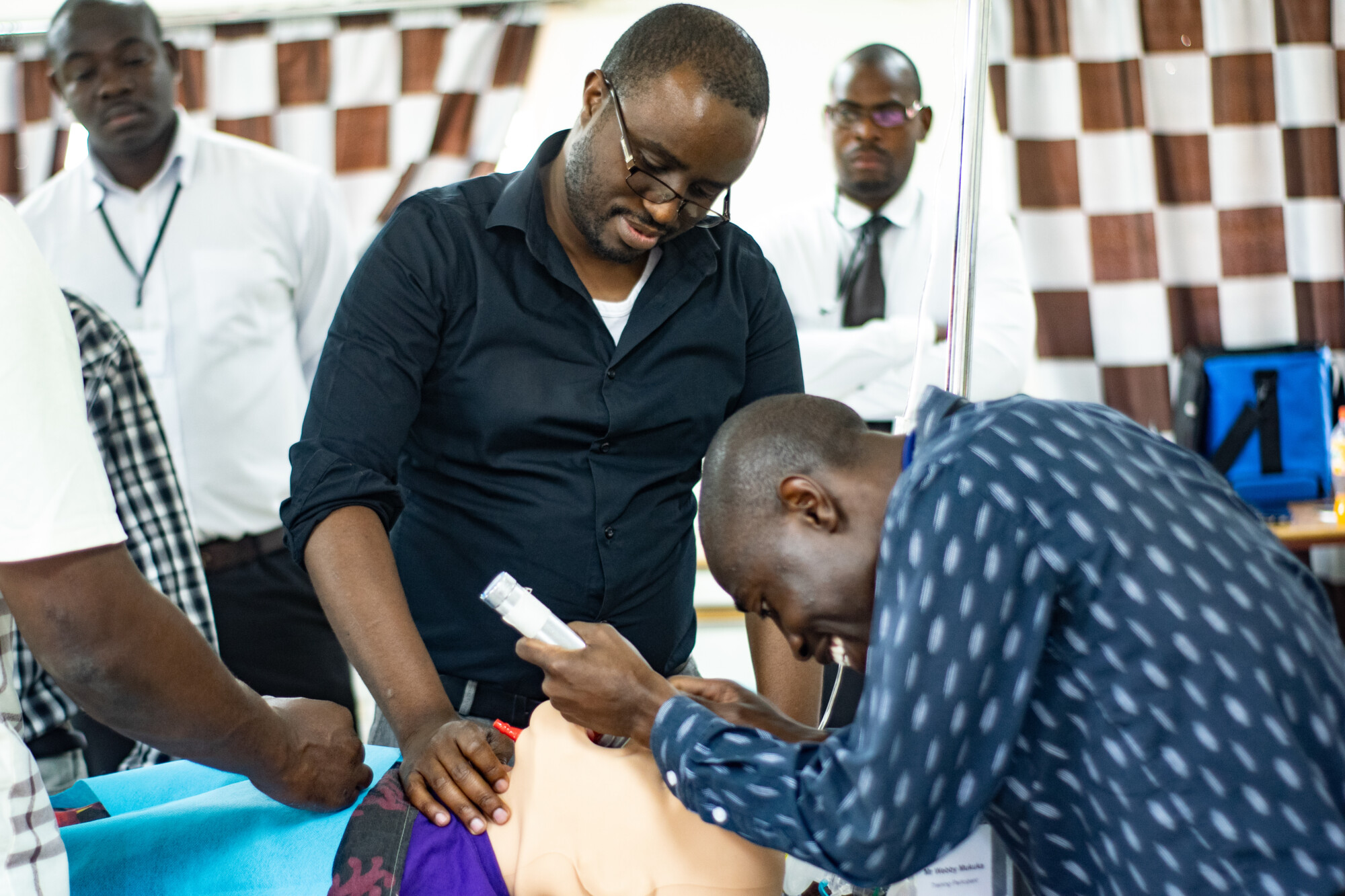
Behind the Scenes of a Gradian Simulation Training



If you had wandered into the Chainama College of Health Sciences in Lusaka, Zambia during the last weekend in August, you might have been confused by the excited yells emanating from one of the terra cotta tiled classrooms in Zambia’s primary nursing school. If you had followed those sounds all the way inside, you’d have seen a group of men wielding laryngoscopes and tracheal tubing, all of them huddled around a medical manikin that appeared to be breathing on its own. One man at the front would have proven responsible for most of the yelling, struggling as he was to thread tracheal tubing down the manikin’s silicon throat while its simulated vital signs declined precipitously.
If you had proceeded to ask what in the world you had just wandered into, you might be surprised to learn it was a training for Gradian’s Universal Anaesthesia Machine (UAM).
Gradian’s product trainings don’t exactly look the way you might expect them to—or the way most product trainings by medical device companies look. After a day of didactic lectures and modules, our trainers teach anesthesia providers how to use the UAM through a series of simulated scenarios that emphasize core clinical techniques and “soft” skills needed to deliver anesthesia. At the Chainama training, which was part of Gradian’s Saving Lives at Birth program, three certified trainers took turns acting the parts of various care providers in an operating theater: a frustrated surgeon wondering what was taking the anesthetist so long, a medical student eager to learn new practical skills, an anesthetic assistant taking direction from the lead anesthetist, etc. The whole time, the primary trainer (in this case, Dr. Sipuka Ndaba) adjusted the manikin’s vital signs using an iPad.
And, because these simulations are made to reflect the environment, various roadblocks get thrown up along the way. For example: the power goes out, and the theater loses the UAM as an oxygen source. (Dr. Ndaba switches off the lights.) The trainee has to quickly hook the UAM up to the backup oxygen source, while reassuring everyone else that the surgery could continue uninterrupted.
For John Chama, a senior lecturer at Chainama College and one of the participants at August’s training, it was during this simulated power outage where things began to go awry. “It was fun but at the same time stressful because you were made to think right then what should happen in the moment of a crisis,” he says.
“Like there’s a power outage. What do you do? The patient is there.”
Mr. Chama told us that the content of the training wasn’t the only thing he was going to pass along to his students: he wants to begin conducting simulations with them to show the reality of what happens in a theater.